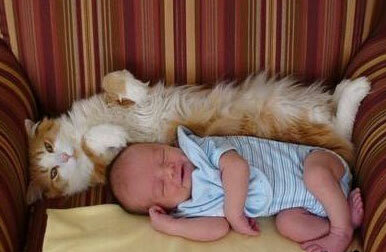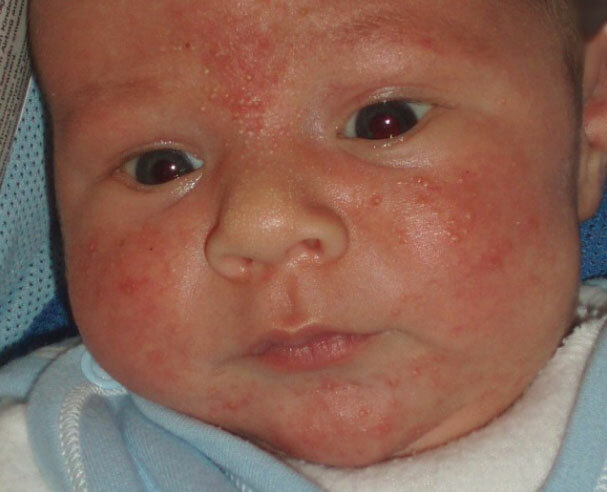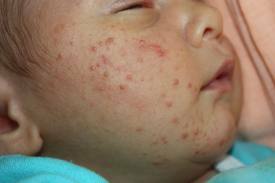 Allergies in children on cats cause a lot of inconvenience, and if you ignore the disease can grow into real trouble.
Allergies in children on cats cause a lot of inconvenience, and if you ignore the disease can grow into real trouble.
How can you identify allergy to cats in your child and what to do in a situation where the fears are confirmed?
Symptoms of allergy in children on cats
It is quite difficult to detect allergy in such a situation: too much irritants around us.
These irritants include:
- household chemicals( air fresheners, washing powders);
- home dust;
- natural factors( poplar fluff, flower pollen).
Allergy to cats has many similar symptoms with other varieties of the disease. Therefore, only the doctor can determine the true cause of the disease.
Possible symptoms of allergy to cats in children can be:
- tear;
- nasal congestion;
- persistent lethargy, drowsiness;
- the skin is spotted.
Contacts with cats can trigger an exacerbation of atopic dermatitis.
Changing seasons in the year also play a role. Sometimes( usually in winter) the symptoms of allergies may recede, and with the advent of spring - once again exacerbated. If you ignore the initial symptoms of allergies, carry out the wrong treatment and do not deal with the timely removal of the allergen, then the situation is possible when a child develops asthma.
Treatment of allergies in children on cats
 Treatment of allergy is mainly carried out using standard methods, applied alone or in combination:
Treatment of allergy is mainly carried out using standard methods, applied alone or in combination:
- use of antihistamines;
- use of decongestants;
- use of drugs with antisymptomatic effect;
- application of antiallergic injections.
In case of impossibility to eliminate the contact of the animal and the baby, as well as with mild allergies, it is necessary to carry out some useful recommendations:
- ensure that the house has good ventilation( put air conditioning or air purifier);
- regularly conduct wet cleaning in the house;
- isolate the animal in another room;
- remove the sanitary pan and food bowl of the animal;
- to replace heavy, long-lasting carpets with lighter ones;
- constantly monitor the cleanliness of a four-legged pet.
Often these measures are quite enough to get rid of allergies in the child. But if the measures taken were unsuccessful, then you will have to give up keeping the animal in the house.
However, and this extreme measure will not relieve you immediately from allergens hiding all over the apartment.
To completely get rid of allergic effects, you should wait a few months and throw out all items belonging to your ex-pet :
- tray;
- bowl;
- comb,
- scratching and more.
In the house it is necessary to carry out thorough cleaning, knock out carpets, wash all things, clean upholstered furniture.
However, these measures are also not enough: it is necessary to constantly strengthen the immune system of the child.
It is believed that the allergenicity of a cat depends on the length of its fur, that is, sphinxes are more preferable for domestic maintenance by members of the cat family than, for example, Siberian cats. But even if it is, absolutely safe breeds still do not exist, and it is better for you to choose a different, compatible animal for the baby.



